Are you a passionate hiker seeking a new challenge? Mount Whitney, the highest peak in the contiguous United States, is definitely an unmissable destination. Standing at 4,421 meters (14,505 feet), Whitney is not just an icon but also a thrilling and memorable summit experience. Let’s explore everything you need to know to prepare for your Mount Whitney adventure!
Introduction to Mount Whitney
Mount Whitney is located in the Sierra Nevada range in California, USA. It’s renowned for its majestic beauty, biodiversity, and as a dream destination for mountaineers worldwide. Each year, thousands come to test their limits, enjoy the sense of accomplishment, and admire the stunning natural landscapes.
Why Hike Mount Whitney?
- Challenge Yourself: Climbing Mount Whitney requires thorough preparation in terms of physical fitness, skills, and mental fortitude. Overcoming this challenge will give you a sense of pride and confidence in your abilities.
- Witness Natural Beauty: From the summit, you can behold panoramic views of the Sierra Nevada, with pristine blue lakes, vast forests, and snow-capped peaks.
- Unique Experience: The Mount Whitney hike is not just a physical activity but also an adventure to explore nature and local culture.
Basic Everest Base Camp (EBC) Trekking Itinerary
Although this article focuses on Mount Whitney, referencing an Everest Base Camp (EBC) trekking itinerary can help you visualize the duration and difficulty of a similar mountain trek. Here’s a basic itinerary for EBC:
- Day 1: Kathmandu (1,320m) – Lukla (2,804m) – Phakding (2,623m)
- Day 2: Phakding (2,623m) – Namche Bazar (3,440m)
- Day 3: Namche Bazar (3,440m) – Sargamatha National Park – Everest View Hotel (3,880m) – Namche Bazar (3,440m)
- Day 4: Namche Bazar (3,440m) – Tengboche (3,860m)
- Day 5: Tengboche (3,860m) – Dingboche (4,410m)
- Day 6: Dingboche
- Day 7: Dingboche (4,410m) – Lobuche (4,910m)
- Day 8: Lobuche (4,910m) – Everest Base Camp (5,364m) – Gorak Shep (5,140m)
- Day 9: Gorak Shep (5,140m) – Pheriche (4,240m)
- Day 10: Pheriche (4,240m) – Namche Bazar (3,440m)
- Day 11: Namche Bazar (3,440m) – Lukla (2,804m) – Kathmandu (1,320m)
Note: This itinerary is for reference only. You need to adjust it to suit your fitness level, experience, and time.
Pre-trip Preparation for Conquering Mount Whitney
1. Climbing Permit
To protect the environment and ensure visitor safety, obtaining a Mount Whitney permit is mandatory. You need to register online and participate in a lottery for a chance to receive a permit. The application period typically opens in February each year.
2. Physical Training
Climbing Mount Whitney demands good physical condition. You should start training several months in advance, focusing on exercises that enhance endurance, strength, and stamina. Some suggested exercises:
- Running: Gradually increase distance and incline.
- Stair Climbing: Helps acclimatize to steep terrain.
- Weight Training: Strengthens muscles.
- Long-distance Hiking: Get used to carrying heavy loads on uneven terrain.
3. Hiking Gear
- Hiking Boots: Choose boots with good traction, comfort, and the right size.
- Clothing: Opt for comfortable, breathable, warm, and waterproof clothing. Layering is recommended for easy adjustment to weather conditions.
- Backpack: Choose a backpack of appropriate size with multiple compartments and load-bearing straps to reduce shoulder pressure.
- Hiking Poles: Help maintain balance, reduce knee stress, and increase hiking efficiency.
- Hat, Gloves, Sunglasses: Protect from sun, wind, and cold.
- Sunscreen: Protect skin from harmful UV rays.
- Water: Carry enough water for the entire hike.
- Snacks: Bring energy-rich snacks like granola bars, chocolate, and dried fruit.
- First-aid Kit: Include basic medical supplies such as bandages, antiseptic wipes, and pain relievers.
- Headlamp/Flashlight: Useful for hiking at night or in low-light conditions.
- Map, Compass, GPS: Help with navigation and tracking location.
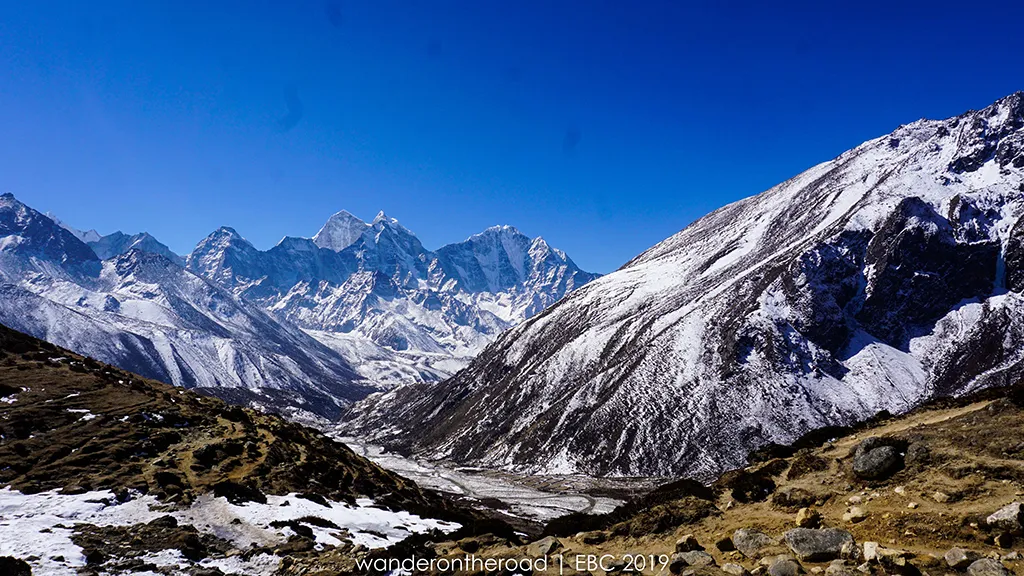
4. Understanding Altitude
Altitude can cause symptoms like headaches, nausea, and dizziness. To minimize the risk of altitude sickness, you should:
- Ascend Gradually: Allow your body time to acclimatize to the altitude.
- Drink Plenty of Water: Helps hydrate the body and reduce symptoms.
- Eat Properly: Provide enough energy for your body.
- Avoid Alcohol and Smoking: Increase the risk of altitude sickness.
- Get Enough Sleep: Helps the body recover.
If you experience any symptoms of altitude sickness, stop and rest. If symptoms do not improve, descend immediately.
5. Checking the Weather
Weather on Mount Whitney can change suddenly. You should monitor the forecast before your hike and be prepared for all conditions.
Popular Mount Whitney Hiking Trails
1. Main Trail
This is the most popular route, approximately 35 km (22 miles) long with a moderate incline. This trail is suitable for experienced hikers with good fitness.
2. Mountaineer’s Route
This route is more challenging, requiring technical climbing skills and experience using ropes and harnesses. It’s recommended only for experienced mountaineers.
Mount Whitney Summit Experience Tips
Based on EBC trekking experience, you can apply some tips for conquering Mount Whitney:
- Hike in a Group: Hiking in a group enhances safety and motivation.
- Hire a Guide: If you are inexperienced in mountaineering, hiring a guide is a good option. A guide will help you plan, prepare, and ensure safety throughout the journey.
- Go Slow and Steady: Don’t try to hike too fast; go slow and steady to conserve energy and reduce the risk of altitude sickness.
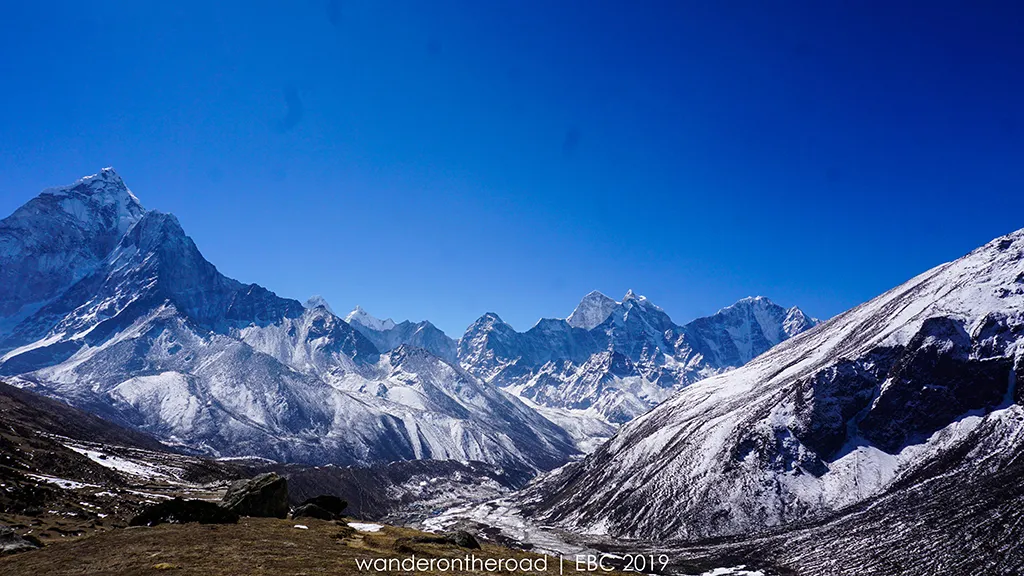
- Rest Regularly: Take breaks after every hour of hiking to recover.
- Enjoy the Scenery: Don’t forget to stop and admire the natural beauty around you.
Important Notes
- Respect Nature: Do not litter, make noise, or disturb wildlife.
- Follow Regulations: Comply with park and management authority regulations.
- Ensure Safety: Always prioritize safety. If you feel unwell or unsure, turn back.
Day 7: Dingboche (4,410m) – Lobuche (4,910m) (Applying to Mount Whitney Hike)
Here’s an example of a day hiking Mount Whitney, similar to the journey from Dingboche to Lobuche on the EBC trek:
Today’s trek is quite long, and learning from previous days, we started early to avoid afternoon fog. We had breakfast at 6:30 AM. By 8:00 AM, we were done with preparations and left the campsite. The approximately 7km (4.3 miles) path to the rest stop was relatively flat, crossing mostly sandy and rocky hillsides. No trees around, the sun beat down, and the wind whistled past our ears.
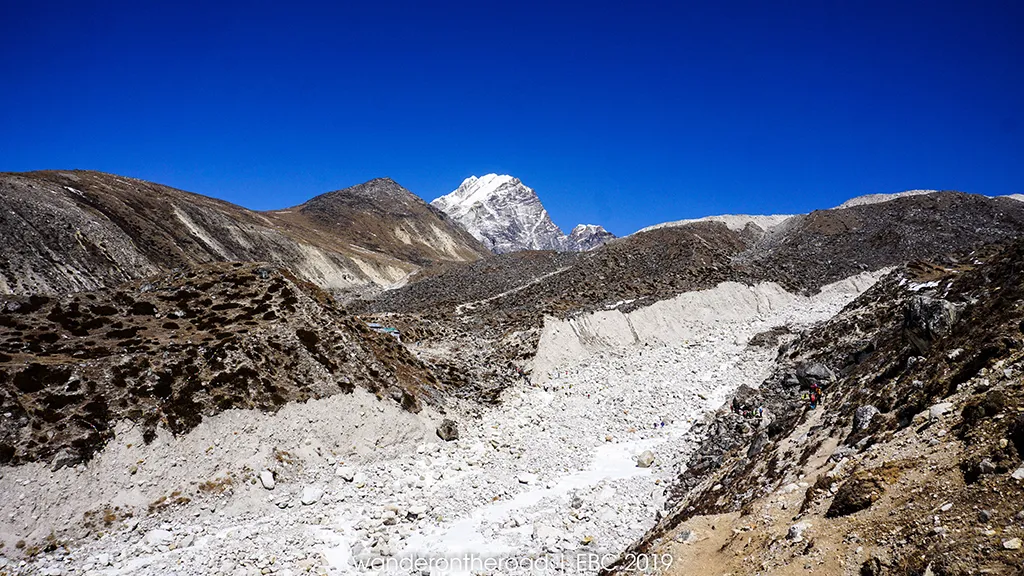
About 30 minutes into the hike, someone in the group realized they had forgotten an important item at the campsite. After a moment of hesitation, a friend and I decided to turn back to the campsite to retrieve it, while the others continued. We agreed to meet at the lunch stop.
After retrieving the item at the campsite, we quickly refueled and continued to catch up with the rest of the group. At this altitude, the oxygen is quite thin, and combined with insufficient energy from breakfast, I had to constantly take out snacks from my bag to replenish energy. Besides that, my other lifesaver was multivitamin, diluted in a thermos to keep it just cool enough.
The initial part of the trail was quite comfortable for me. We caught up with the rest of the group before reaching the rest stop. After the flat section, the trail turned into gravel and boulders. There were times when we had to step on each stone, carefully placing our feet to ensure a firm footing, even using both hands to avoid falling. This section was extremely painful for the soles of our feet and knees, especially when descending to the rest area. We stopped, had lunch, and rested to regain strength before laboriously climbing uphill to a higher point.
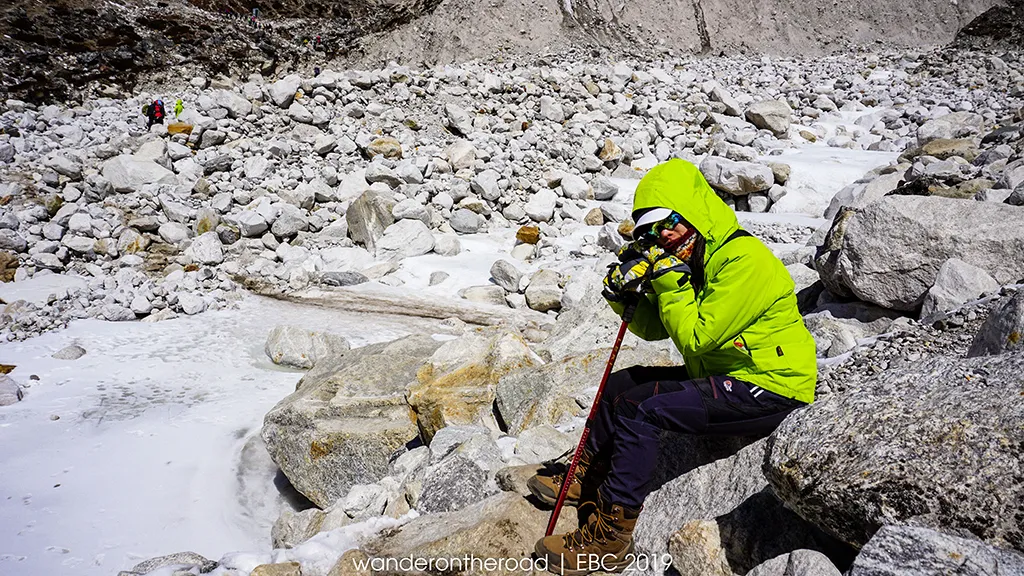
After lunch, of course, we couldn’t avoid the experience of carrying a full stomach uphill. Slowly stepping uphill, occasionally looking back to make it less daunting, and waving to encourage everyone below. After about 45 minutes, we reached the top.
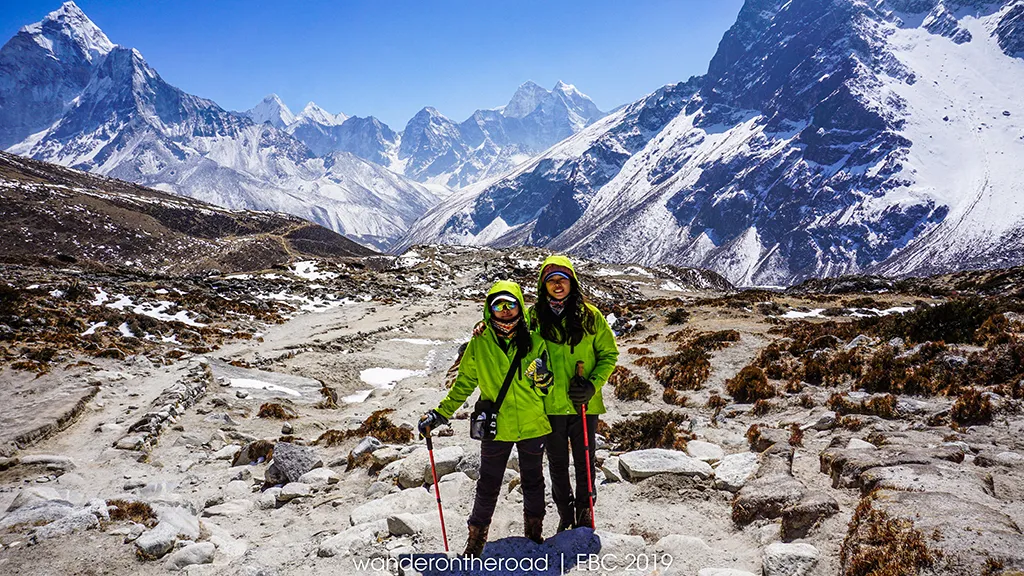
Surrounding us were stone memorials for those who had permanently rested in the process of conquering humanity’s great mountains.
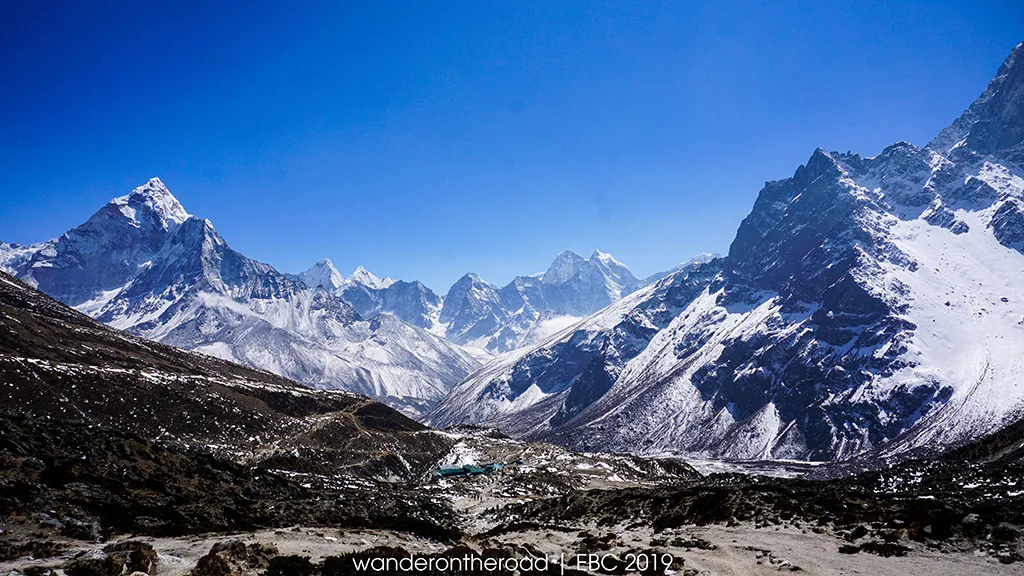
From here, we gazed out in all directions, nature was immensely vast, and humans were so small.
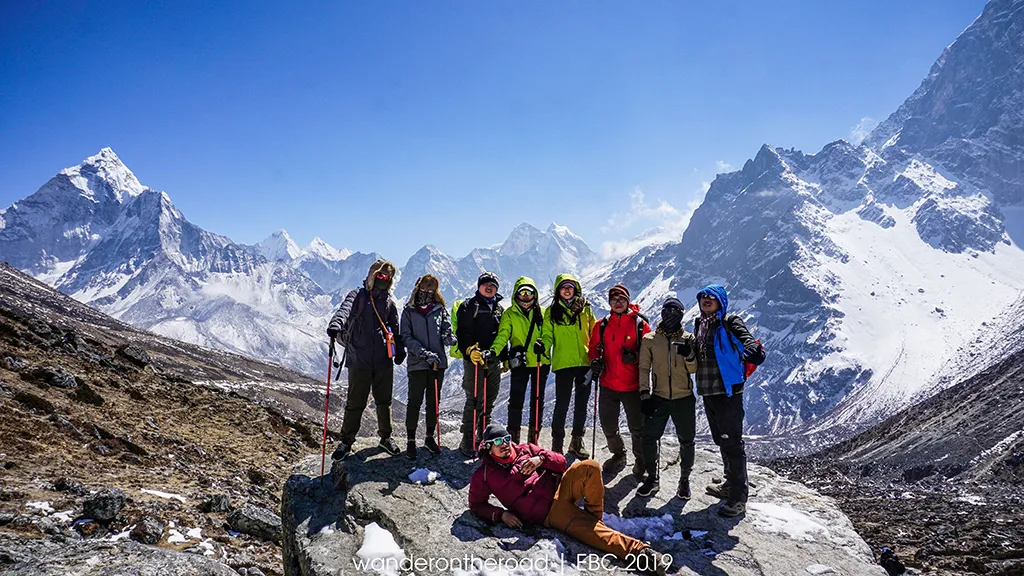
Saying goodbye to the memorial, we continued our journey to the permanent ice area. The path was quite slippery; we either clung to the rock face, where there was still snow/rock not yet frozen into ice, or sat down and slid on our bottoms. We approached the riverbed, waiting for the guide to identify a safe spot to cross to the other side. Everyone was nervous at this point, having to use trekking poles to probe the ice surface ahead to see if it was solid enough to step on.
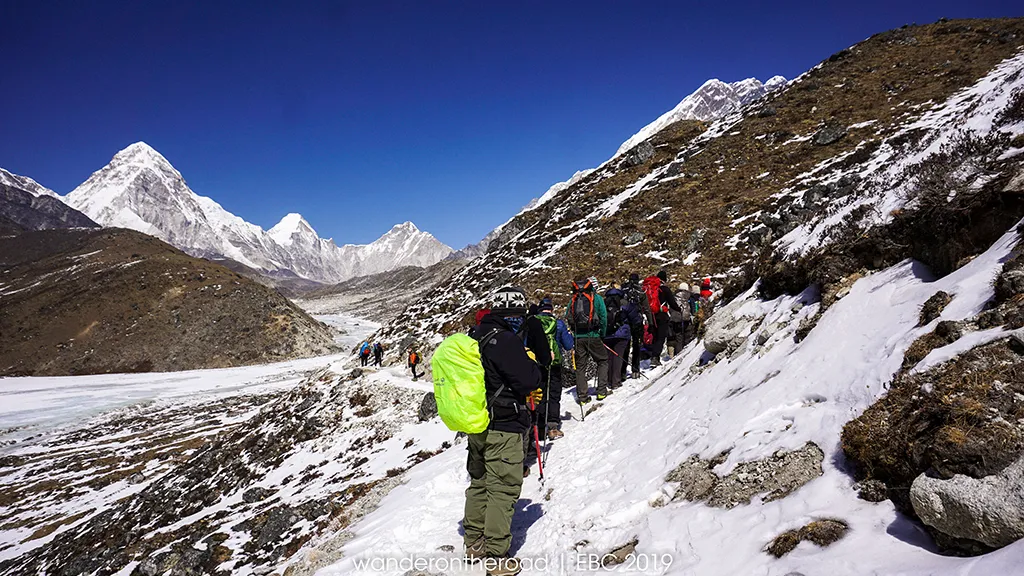
We safely crossed the glacier river. Trekking uphill for another section, and after about 30 minutes, we reached the campsite. The outside temperature was now around -10 degrees Celsius (14 degrees Fahrenheit), bone-chilling cold.
We had dinner in the camp shelter. Then listened to the guide’s instructions for tomorrow’s trek to reach the summit of Mount Whitney. Everyone was eager, although very tired. We ended the evening early to rest, recharging energy before entering the most important day of the entire journey.
Conclusion
Conquering Mount Whitney is a challenging but incredibly rewarding experience. With thorough preparation, you can absolutely conquer this peak and enjoy the amazing moments at the summit. Remember, safety is always the top priority. Wishing you a successful and memorable Mount Whitney summit journey!